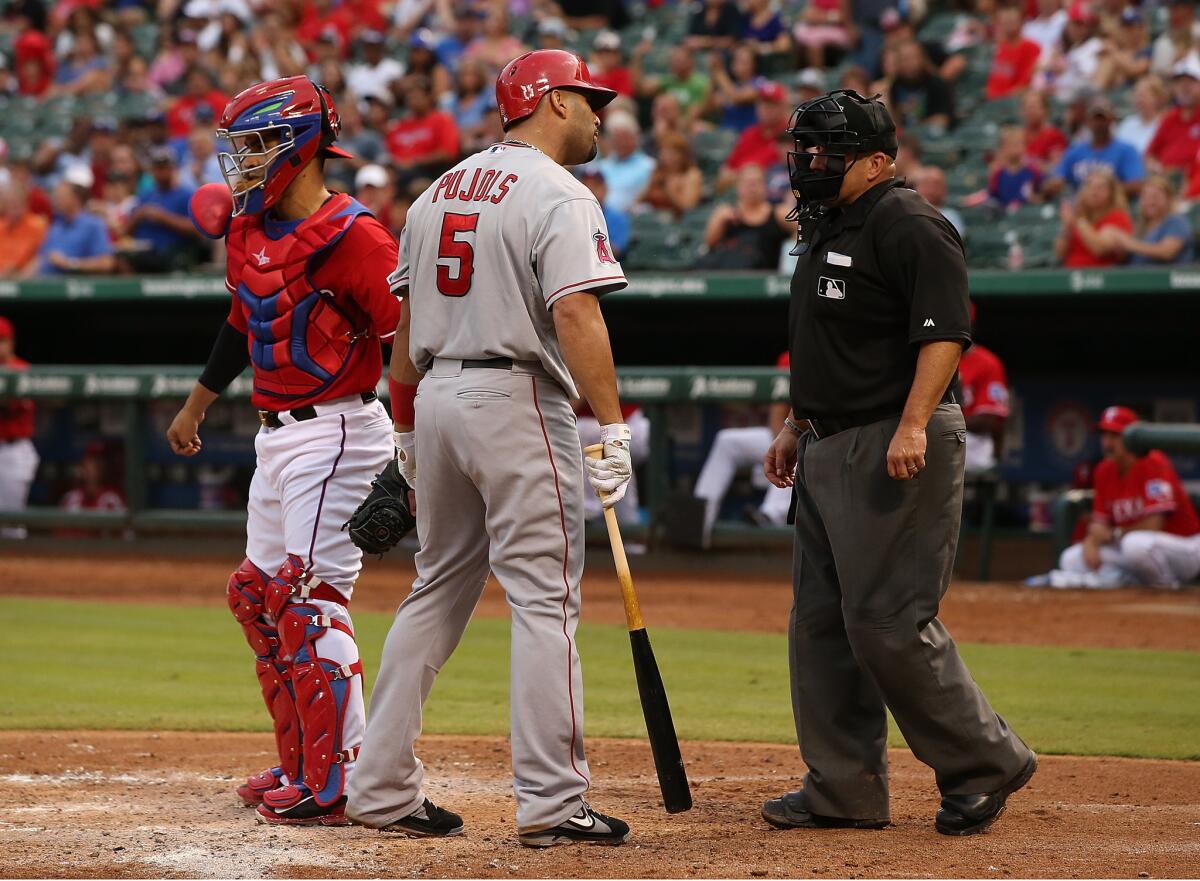How baseball can dig itself out of its offensive -- and ratings -- slump

Those of us reveling in how the Angels have outdistanced the rest of Major League Baseball this season may not have noticed, but the sport has been suffering from a more than decade-long slump in offense. There are signs that the falloff in slugging generally and home runs especially is taking a bite out of the game’s TV ratings, which have fallen by roughly 25% or more over the last decade.
It’s tempting to attribute the meager offense to the end of the steroids era, during which those numbers supposedly were artificially inflated. But over at the Atlantic, Derek Thompson makes a plausible case that the real villain is a different factor--specifically, the home plate cameras that have made umpires’ ball-and-strike calls more accurate.
Thompson relies on research by sabermetrician Jon Roegele of Hardball Times to argue that the league’s Pitch f/x camera technology, which tracks the ball’s velocity, movement and location over the plate, has prompted umpires not only to become more consistent, but to expand the strike zone.
The biggest change is at the knees; the percentage of pitches at the bottom of the strike zone called as strikes rose from 29.6% in 2008 to 43.8% in 2013, Roegele found. (See accompanying graphic.) This change has crept up on batters, which may be why a slugger like Albert Pujols leads the league in angry glares at umpires after a called low strike.
The change won’t affect all batters equally, of course; Mike Trout, whose wheelhouse is the bottom part of the zone, won’t be harmed as much as a slugger who can’t resist the high hard one but is accustomed to taking the low pitch.
On the whole, however, the larger strike zone -- Roegele calculates it has grown by some 5%, to an average 459 square inches last year from 436 in 2008 -- obviously suppresses offense. Thomson cites figures showing total homers declining from 5,693 in 2000 to 4,661 in 2013, and slugging percentage from .437 to .396 in the same period.
It’s conventional sports entertainment wisdom that offense pins viewers’ eyeballs to the TV screen. Kevin Craft recently recounted at slate.com how a package of rule changes in 1994 revived the National Football League by favoring the pass.
Baseball last recognized it was in trouble in 1968, the so-called Year of the Pitcher, when Carl Yastrzemski led the league in batting averages with a dismal .301. The league responded, as Jonah Keri observed at Grantland, with “rule changes like lowering the mound, to more offense-friendly ballparks, to bats with thinner handles, to juiced balls, to juiced ball players.”
Keri notes that there may be several reasons for the current offensive slump, including anti-steroids enforcement, the aggressive use of defensive shifts, and chance. It’s also true that nothing is forever in baseball. Even if Pitch f/x isn’t responsible for the slump, it is a useful tool in diagnosing the cause or causes. Batters may adjust on their own, especially to strategies like the shift and to changes in the strike zone.
If they don’t, there’s always lowering the mound or moving in the fences--and, of course, shrinking the strike zone. That’s worked before, and it may well work again.
Keep up to date with The Economy Hub by following @hiltzikm.
More to Read
Inside the business of entertainment
The Wide Shot brings you news, analysis and insights on everything from streaming wars to production — and what it all means for the future.
You may occasionally receive promotional content from the Los Angeles Times.











